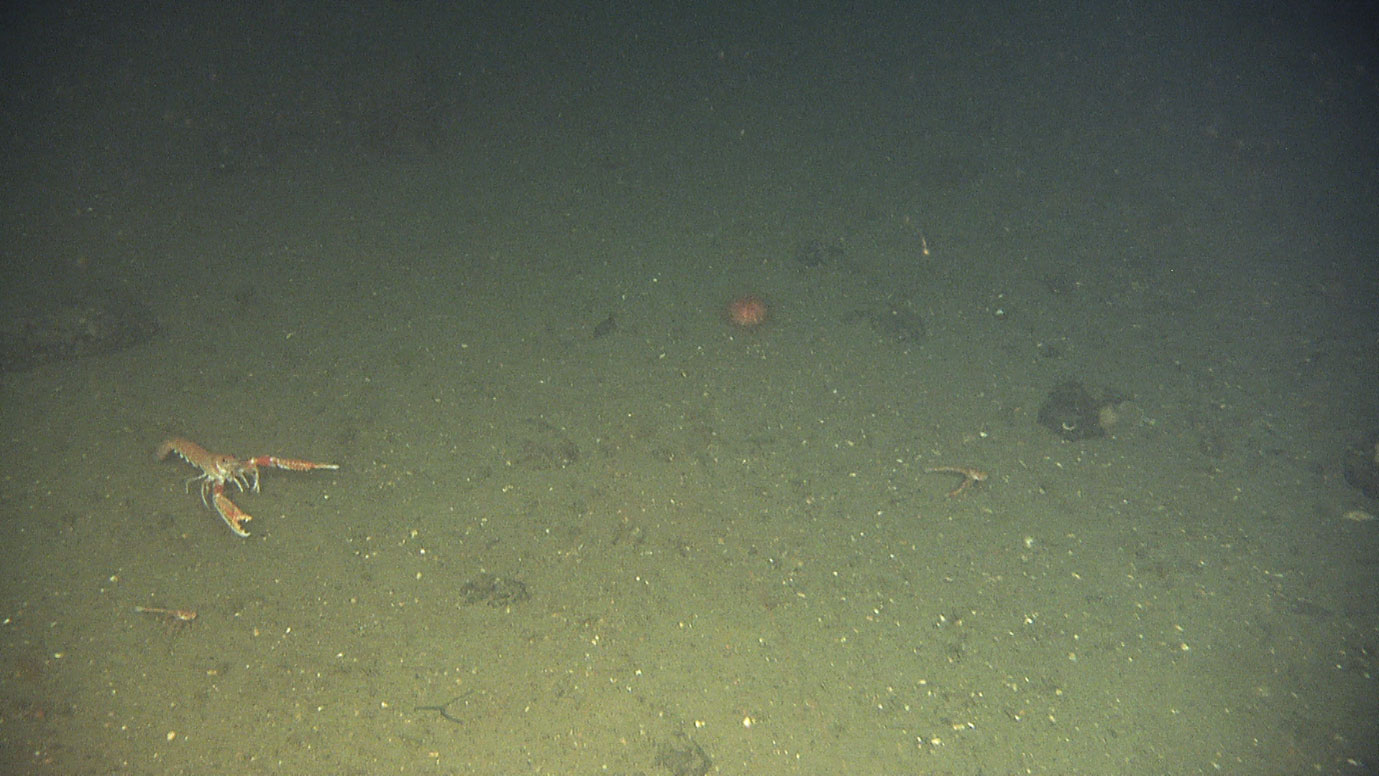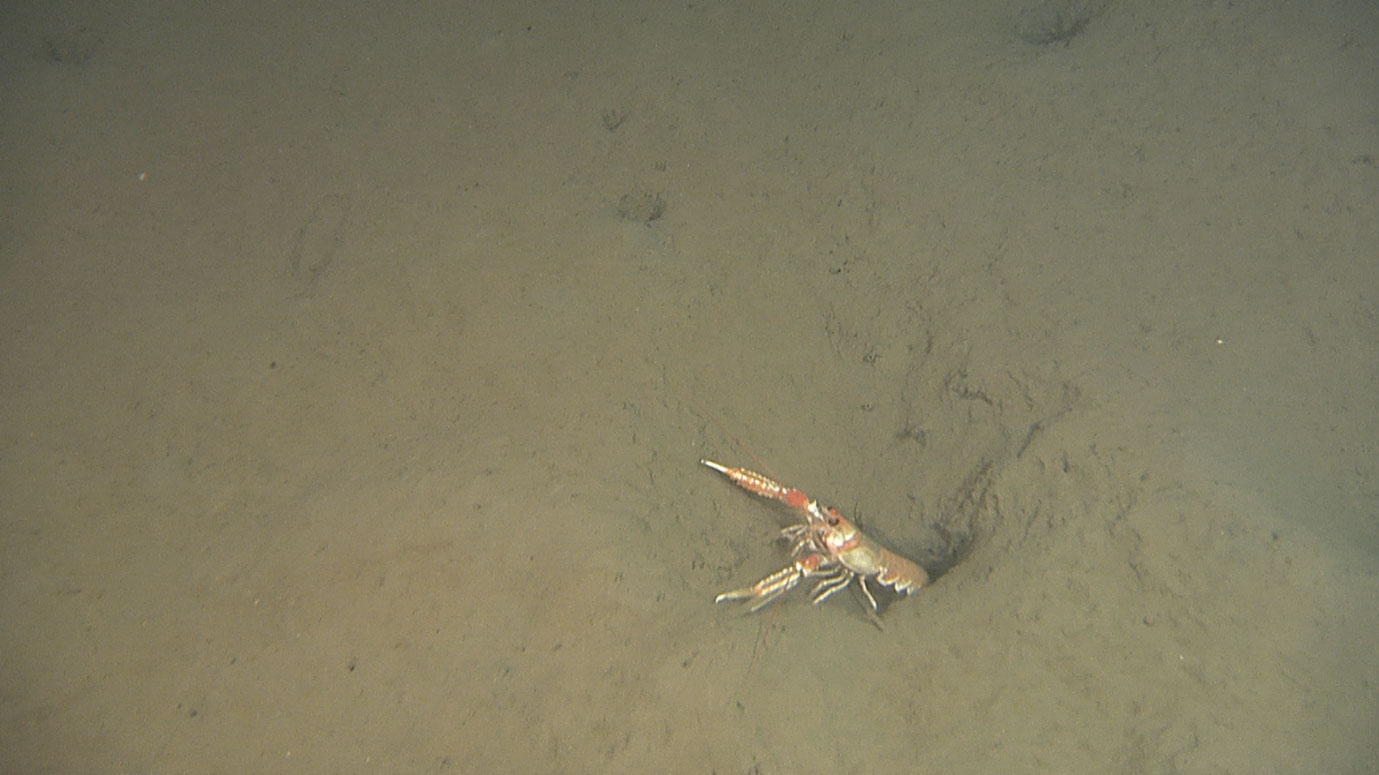
A Norway lobster (Nephrops norvegicus) crawling out of the tracks left by a trawler.
Photo: Mareano / Havforskningsinstituttet
A Norway lobster (Nephrops norvegicus) crawling out of the tracks left by a trawler.
Photo: Mareano / HavforskningsinstituttetPublished: 27.10.2022
Landing our camera rig on the seafloor, we saw some very different and interesting fauna (including corals!), and we all got so excited to start the flight along the 200m line with the camera rig. And then - our camera broke down... and we had to abort! With that, everyone’s enthusiasm faded. But while the technicians rolled up their sleeves and went to work on fixing the camera, we realized we were thankful for a small break and the possibility to catch up on some sleep. We made the decision to use the downtime to transit to the second area-of-interest during this cruise, the Skagerrak between Kragerø and the outer Oslofjord. (But we will definitely come back to this bedrock!)

Our first survey station in this area was situated just 5 km from the coast at a water depth of around 100 m. As we hadn't been on a survey in this region before, we didn't know what to expect. Everyone was also a bit nervous and curious to see if the camera would now do its job again.
The technicians had worked non-stop for more than 24 hours to fix it, but we needed a last test to know for sure. Luckily, we have great technicians with us! And what a huge surprise when the camera rig was lowered down to the seafloor and we discovered a beautiful seabed of mud, sand, and stones of various sizes (gravel, cobbles, and boulders), creating a perfect habitat for a stunning colony of Norwegian lobsters! See for yourself on these images we picked out for you from our video. We counted over 30 individuals in a mere 200 m distance, and many more burrows! Needless to say, our excitement and enthusiasm came right back.
The Norway lobster is a crawler more than it is a swimmer. We can recognize the tracks it leaves behind in the sandy mud as we fly over the seabed with the camera rig. These creatures dig burrows, especially the females and the younger ones.

The young lobsters often start digging their first burrows as extensions of the adult burrows, sort of like a small condo over their parents’ garage. The females spend more time in the burrows digging than the males, and when they bear eggs, they can stay in the cave for 8 to 9 months! Lobsters feed on other crustaceans and molluscs, and sometimes polychaete worms and echinoderms (sea stars, sea urchins and sea cucumbers) are on the menu too. But these food items can be scarce for the female when she is on egg-watch in the cave, so she actually switches her diet over to filter feeding. Meanwhile, the older and bigger males are more out of their caves, walking around on the sea floor looking for tasty shells. That might be the reason why they easier get caught in lobster traps!